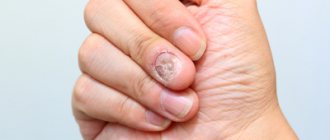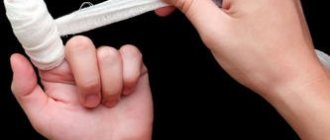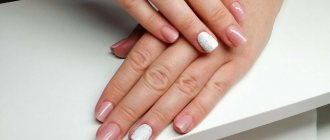The benefits of soap during epidemics
During the day, on the street and in public places, we come into contact with many people and touch various objects. This is how pathogenic viruses and bacteria get onto the skin of your hands. If there is no damage to the skin, then dirty hands themselves do not lead to diseases. But if you take food with unwashed hands or rub your eyes, viruses and bacteria enter a favorable environment - on the mucous membranes, penetrate the body and become the cause of disease.
It is known that the influenza virus spreads during epidemics not so much through airborne droplets, but through shared objects and dirty hands.
The most dangerous objects are door handles of offices, shops and public toilets, seat backs and handrails in public transport.
The benefits of soap during epidemics are greater than ever. To protect yourself from influenza and ARVI, doctors recommend:
- wash your hands regularly with soap;
- wash the inside of your nose with soap.
Such simple actions help to significantly reduce the incidence of illness during epidemics.
Meaning of the word soap
soap
cf. a combination of a fatty substance with an alkali, for washing and washing. Simple soap is made from lard and potash. Tatar soap Kazan; | White sweat foam on a horse. | Plant. lordly arrogance, wild, cuckoo soap, light. | Gypsophila muralis, cattail, lyschitsa, mouse eyes. Earth soap, talc clay. Wild soap, wavewort plant, Dianthus. Kalmyk soap, magpie soap, plant, see nap. The soap is gray, but the wash is white. Buy soap and wash the stigma. He ate a lot of soap, that is, he took a lick. Wash yourself with soap, and don’t give in to evil spirits. Soap in your bosom saves you from spoilage. Even if he washes it with soap, he can scar it with his bast. Even if you sew with a bast (an awl), you wash it with soap. Just as the soul is black, you can’t wash it away with soap. Godfather to godfather with soap, and godfather to godfather with gingerbread (a custom on Forgiveness Day). On soap, whitewash, silk broom, raspberry steam (thanks for the bath)! There was lard, but it became soap. Neither awl nor soap; neither to sew, nor to soap, neither this nor that. Young people need it on the awl, on the soap, on the white beliltse. They were taken over like soap, everyone ran away. He can fit anywhere you want without soap. No lard, no soap, neither this nor that. Soap, lather what, rub with soap and wash with water, wash. Soap water and dissolve soap in it. | * Wash your head, scold, scold, give a race. * Soap the neck, clean the buckle, hit the neck, which makes the husband soapy. , resin neck, back of the head. -xia, whiten yourself and | to be lathered up. The horse is lathering and foaming with sweat. Soar up the water. Cleaned up the last bits. I washed my hand. I washed out all the soap. Lather his head. Wash it some more. Wash the runners and grease them. Wash all the laundry. I washed it all day. The soap became blurry and softened. The gloves are washed away and narrow. Soaping Wed. , duration soap for women , will finish. action according to verb. Give someone a hard time and scold them. Soapy, with properties similar to soap, generally producing foam with water. Soapy, related to soap and washing. Soap lard, intended for making soap. Soapy smell. Soapy water. Soap plant. Soap hut, laundry department. Soap bubble. Soapstone or soapstone husband. a soft greenish stone from which the Chinese carve idols. Soap gifts that the bride gives to the matchmaker after the bath, on the next wedding day. Soap grass, Salsola, kachim, serodarik, thorn, camel hay, tumbleweed, kurai, caravin, ash pan, potash grass; | Saponaria, soapwort, soapwort, falcon migratory, Tatar soap, cleanseed. Soapy, good cleaning: soapy lye; | giving a lot of soap suds: soapy soap. Soapiness of women soapy property. Soapy, soapy, to a lesser extent. Soapy, looks like soap on the outside. Soapy women. fossil, soapy to the touch, talc. Black soap, black pencil. Soap clay is used for felting cloth. Soap man. Sapindus plant. Soap man plant soap grass, and | husband soap maker soap makerDahl's Dictionary
The benefits of soap in the fight against dangerous infections
But there are infections that are dangerous at any time of the year. For example, even those who have been vaccinated have a chance of contracting tuberculosis. The benefits of soap are very significant in combating the spread of this disease.
Washing your hands with soap before eating and after visiting public places and teaching children to practice good hygiene are the main things everyone should do to reduce the risk of infection.
Over the last century, the number of dangerous infectious diseases has decreased significantly. And the new rules of hygiene adopted by society, including the regular use of soap, played an important role here.
Detergents in human life
We are surrounded everywhere by objects and products made from substances and materials obtained in chemical plants and factories. And in everyday life, every person carries out many chemical reactions. For example, washing with soap, washing with detergents, and cooking are also chemical processes. There is no need to further list the chemical processes that a person carries out in everyday life. Chemistry is a science, an important part of natural history. Nowadays, you can often hear the words: “chemistry has spoiled nature,” “chemistry has polluted the reservoir,” etc. In fact, the science of chemistry has nothing to do with it at all! People, using the results of science, are irresponsible about the requirements of safety rules. Science cannot be good or bad. Science is the accumulation and systematization of knowledge. How and for what purposes a person uses this knowledge is another matter. Understanding the essence of the chemical processes that we encounter in everyday life can benefit a person.
Currently, the chemical industry produces a large number of different synthetic detergents (SDCs). The production of synthetic detergents is based on cheap raw materials, or more precisely on oil and gas products. Many synthetic detergents clean equally well in both soft and hard water. Some products are even suitable for washing in sea water. Synthetic detergents act not only in hot water, as is typical for laundry soap, but also in water at relatively low temperatures,
SMS are compositions that contain surfactants (surfactants) - 15-20% and various additives - organic and inorganic.
Surfactants are organic substances whose molecules contain hydrophobic (water-repellent) and hydrophilic (loving to retain water) parts. The hydrophobic part is determined by hydrocarbon radicals (for example, C17H35- or C12H25-), capable of penetrating and interacting with the pollutant (fat). The hydrophilic part is polar groups (for example, -COOH, -COONa, -SO3H, -SO3Na, -OH), which easily dissolve in water and transfer dirt particles into the washing solution. Due to this, the detergent ions, along with the contamination, are detached from the surface of the fabric and pass into the aqueous environment in the form of an emulsion or suspension.
Soap was known to man before the new era. Scientists do not have information about the beginning of soap making in Arab countries and China. The earliest written mention of soap in European countries is found in the Roman writer and scientist Pliny the Elder (23-79). In books called Natural History, which were essentially an encyclopedia of the natural sciences of antiquity, Pliny wrote about methods for making soap by saponifying fats. He wrote about hard and soft soap made using soda. Despite the fact that at the end of the Middle Ages there was a fairly developed soap industry in different countries, the chemical essence of the processes was not completely clear. Only at the turn of the 18th and 19th centuries was the chemical nature of fats clarified and clarity about their use in making soap made clear.
Soaps are salts (most often sodium or potassium) of higher fatty acids, mainly palmitic, stearic and oleic. They are obtained by boiling solid (lard) or liquid (vegetable oil) fats with sodium or potassium hydroxide:
H2C-O-CO-(CH2)16-CH3
HC-O-CO-(CH2)16-CH3 + 3NaOH
H2C-O-CO-(CH2)16-CH3
HC-OH + 3CH3(CH2)16COONa octadecanoate (stearate)
H2C-OH sodium propanetriol-1,2,3
(glycerol)
Obtaining soap from fats can be done in various ways. They differ from each other both in the degree of completeness of fat hydrolysis and in the medium in which saponification occurs - aqueous or alcoholic. In production, saponification is carried out in an aqueous environment; it proceeds rather slowly (several hours), so an alcohol solution should be used to increase the reaction rate. Alcohol dissolves fat, creating a homogeneous environment, which significantly speeds up the reaction.
After saponification is completed, sodium chloride (saturated solution) is added to the reaction products to salt out the resulting soap.
Soap is a surfactant (surfactant). It reduces the surface tension of water and thereby increases its wetting effect. The detergent effect of soap is due to the fact that soap anions have an affinity for both fats and water. The anionic carboxy group is hydrophilic, and the hydrocarbon chain of the fatty acid is hydrophobic. The hydrophobic atomic group promotes the dissolution of soap in a non-polar environment, i.e. in fat. As a result, a micelle is formed - an aggregate of polluting fat and soap molecules. These micelles are washed off from the contaminated surface with water.
By interacting with calcium ions contained in hard water, soaps form insoluble calcium salts (a film on the surface of the water) instead of foam. As a result, the soap is wasted uselessly.
Nowadays, buying a candle is available to everyone almost in the same way as matches. However, this was not always the case. At the beginning of the last century in Rus', candles were highly valued, and in the homes of ordinary people a torch or lamp with oil was usually lit. (Kerosene lamps appeared later). People's generosity was judged by the size of the candle a person lit when attending church.
In the last century, candle production was a developed industry. The candles were wax, tallow and paraffin. The first candles were wax. Beeswax is a gift from nature and a candle from it could be made in the most primitive way. Much later, the wax began to be cleaned. This was achieved by melting the wax and filtering the molten state through a cloth. It should be noted that vegetable wax was imported from the American continents to Europe. It was used to make candles instead of bees, but it was much more expensive and therefore could not compete. Tallow candles were made from rendered lard, which was then purified mechanically (by straining through a cloth) and bleached in the same way as wax. When burning, tallow candles produced a lot of smoke. Paraffin candles were initially quite expensive, since paraffin was extracted by distilling the tar of plant substances. Then in England they began to extract it from peat. However, in both cases it was obtained only in small quantities. A fundamental change occurred with the establishment of large-scale oil refining. Now candles are one of the most accessible petrochemical products.
Practical part
Making a candle from laundry soap.
Reagents and equipment: a piece of laundry soap, a solution of acetic acid (2N), a tin can, a glass rod, a spoon, a knife, filter paper, an electric stove, a water bath, thread for the wick.
Progress
Using a knife, cut pieces of laundry soap and place them in a clean tin can. Pour enough water to cover the soap pieces in excess, and place the jar in a water bath, continuously stirring its contents until dissolved. When the soap is completely dissolved and the solution becomes a monotonous slurry, remove the tin can from the water bath and add (carefully) 7-8 ml of a 2N acetic acid solution. Under the influence of acetic acid, a thick white mass - stearin (a mixture of stearic C17H35COOH and palmitic acids C15H31COOH) is released from the solution and floats to the surface:
C17H35COONa + CH3COOH C17H35COOH + CH3COONa sodium stearate acetic acid stearine sodium acetate
Let it cool and, collecting the stearin from the surface with a spoon, transfer it to a clean bowl. Then rinse with water two or three times and wrap in a clean white rag or filter paper to absorb excess moisture. Melt the dehydrated stearin. To make a candle, we repeatedly dip a thick twisted thread into the resulting molten stearin, each time allowing the stearin to harden on the wick. This should be done until the candle grows to a sufficient thickness on the wick.
To get a beautiful figured candle, it is advisable to first soak the wick with 1-2 layers of stearin and secure it in the mold so that it runs exactly in the center of the mold and is slightly stretched. Then hot stearin is poured into the mold. To color the candle, ions are introduced into the working mixture (Cr3+ - green, Cu2+ - blue, Ni3+ - light green, Co2+ - blue, etc.).
Making homemade soap.
Reagents and equipment: a bar of baby soap, water, aromatic (essential) oils, a saucepan, a spoon, a knife, filter paper, an electric stove, a water bath, a mold.
Progress
Grate baby soap on a fine grater.
Pour the base oils into a saucepan and place in a water bath, pouring in the soap shavings. Mix everything well.
While stirring the soap shavings, carefully and slowly pour hot water (100-150 ml) into the pan. Stir the resulting soap solution until the lumps are completely dissolved. On average, the melting process takes from 30 minutes to three hours. Keep an eye on the water in the pan so that it does not boil over. (You can grate the soap in advance and leave it in warm water for a day).
When the soap dissolves, pour additives into it (rose petals, etc.). And keep it in the bathhouse for a little while, warm it up properly.
Then, remove the pan from the heat and add the required amount of essential oils. They evaporate when heated, so you need to stir quickly.
Pour the entire contents of the pan into the prepared pan. Any plastic container is suitable as a mold: a mayonnaise jar, a glass, children's molds, etc. It is important that the diameter of the container's neck is wider than the diameter of the bottom. Otherwise, the soap will be difficult to remove. Leave to cool for several days.
The finished soap does not press down and comes away from the walls of the mold well; it can be removed. Soap needs about 2-7 days to mature.
Conclusion
Indeed, chemistry is everywhere around us. And we must use the results of the work of this science correctly, rationally, and safely. It is necessary to avoid purchasing uncertified goods of dubious origin, and if necessary, be able to provide first aid to the victim.
When SMS gets on the mucous membranes of the eyes, conjunctivitis occurs, clouding of the cornea and inflammation of the iris are possible. Inhaling SMS may cause respiratory complications, including burns and pneumonia. If taken orally, the functioning of the digestive system is disrupted, vomiting occurs, in severe cases the nervous system is affected, blood pressure decreases or increases, and oxygen deficiency occurs. Constant contact with detergents leads to the development of allergic diseases, in particular urticaria.
If detergents come into contact with the mucous membranes of the eyes, rinse them with a strong stream of water. If taken orally, rinse the stomach with water. In severe cases, it is necessary to consult a doctor.
It is difficult to imagine the life of a modern person without the use of chemicals.
The work done to create the project not only helped me learn a lot of new things and taught me how to set up an experiment, but was also very interesting and required independence, a creative approach, and great responsibility.
How to get the most out of soap
To get the most benefit from using soap, you need to wash your hands correctly. The oilier and wetter your hands, the more germs your hands may have.
To effectively wash away grease and dirt, you need to wash your hands thoroughly for about one minute.
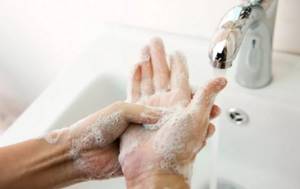
To use soap to its advantage, it is recommended:
- choose the right soap taking into account the characteristics of your skin;
- wash your hands and body regularly;
- wash your hands for at least one minute;
- wash your nose with soap during epidemics and after contact with sick people.
Dry skin and itching are a consequence of soap procedures
When carrying out soap procedures, it is necessary to take into account such a factor as the amount of air humidity in the apartment. If it is less than 40%, then naturally the body will lose water through evaporation. The fact of such dehydration of the body, unfortunately, is the most common cause of harm to health due to dry skin. The skin reacts to overdrying with itching, which is very difficult to treat with conventional means.
To combat itchy skin, many resort to special oil baths, which are also called Cleopatra’s baths. Historical sources maintain that she added two teaspoons of olive oil and a glass of milk to the bath water.
Hot, dry weather, air conditioning, and sunbathing also greatly contribute to dry skin. This often becomes the cause of exacerbation of many not only skin diseases, but also other diseases, which usually signal to us with itching that there is trouble in the body.
LiveInternetLiveInternet
Quote from Evgenia_Tobolovskaya's message
Read in full In your quotation book or community!
The benefits of handmade soap. Secrets of use.
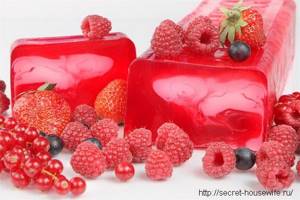
To get the maximum positive effect from using handmade soap, you need to know some ways to use it. Natural handmade soap containing essential oils and plant extracts is a close communion with nature. The composition of this product and its manufacturing technology allow you to not dry out the skin, gently cleanse it, making it soft, velvety and very fragrant. Daily skin cleansing Handmade soap is an ideal shower product, as its dense, creamy foam gently and effectively cleanses the skin and pores, nourishes the skin with essential oils and natural additives, and also provides care and relief from numerous skin problems. The soap is made at low temperatures, this is what allows it to retain all the beneficial substances and vitamins, so even dry skin does not tighten after washing with this soap. It is also important to distinguish between varieties that depend on the components contained in the soap, which have different aromatherapy effects. So, for morning washing it is better to use soap with the smell of citrus, which is a source of vigor and can lift your mood for the whole day. In the evening, lavender soap is considered ideal for use - it helps you relax and forget about worries; if aphrodisiacs are added to such soap, such as ylang-ylang, rose, or patchouli, this will create an erotic mood, emphasizing your uniqueness. Soap masks Masks based on handmade soap can be a real boon for caring and cleansing your facial skin. It’s easy to prepare such a mask: take a piece of soap, chop it or grate it on a fine grater, add a little warm water and whisk. The resulting dense foam is applied to the skin, except for areas around the lips and eyes. For dry and sensitive skin, use handmade soap with chamomile, jasmine, sandalwood, nettle, and lavender. Lemon, eucalyptus, grapefruit, bergamot, mint, juniper are suitable for oily skin. As it dries, apply the next layer of foam, followed by another, and after 5 minutes, wash your face with cool water, then wipe your face with lotion and apply a nourishing cream. This mask will be a wonderful remedy for problematic skin, especially those with blackheads and acne. It should be used 2 times a week; after constant use, the skin will begin to glow with cleanliness and health. Handmade soaps as shaving products This is a godsend for men. Beat the foam and apply to the treated area of skin. The foam will soften the hair being removed well, and the natural ingredients will not cause skin irritation, that is, additional after-shave products will not be needed. Soap massage Any massage is most effective in combination with water procedures, and a massage that uses handmade soap especially deeply cleanses the skin, removing dead skin layers and nourishing, as well as saturating it with useful substances. When using the appropriate soap, massage helps reduce body volume and prevent cellulite. The massage is carried out using a special mitten made of a hard washcloth. Thick soap foam is applied in circular smooth movements, from the back, then to the arms and legs, and, stroking, rubbing the skin, kneading for 5-15 minutes. As a result, you get renewed and breathable skin, lightness throughout the body and pleasant relaxation throughout the body. That is, handmade soap helps maintain youth and health of the skin of the face and body, provides gentle cleansing and has an additional aromatherapy effect, relieves stress and energizes. The result is not long in coming - it is the amazing appearance of the skin, its elasticity and youth. source
Series of messages “Folk Recipes”:
Part 1 - DO NOT THROW AWAY THE ONION SKINS! Part 2 - AN AMAZING WAY TO TREAT DERMATITIS USING BAY LEAF... Part 35 - Chronic fatigue syndrome. Five best recipes. Part 36 - Almonds are a building material for bones, blood and skin. Part 37 - The benefits of handmade soap. Secrets of use. Part 38 - How to overcome joint pain
